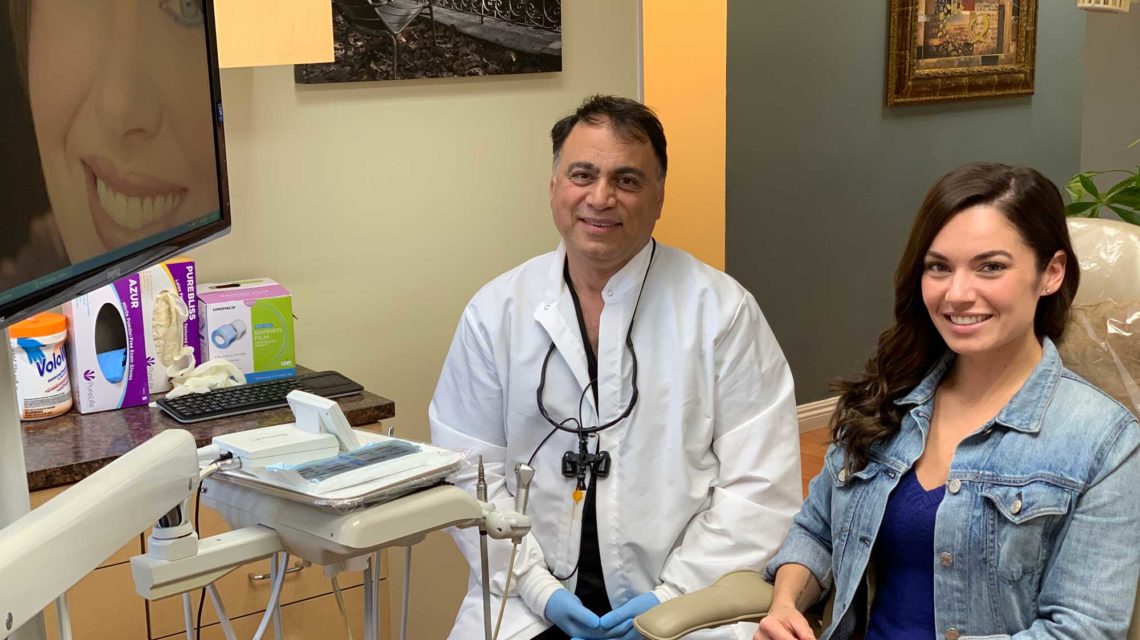Why should you treat your gum disease? When investigating your overall health, one of the keys is healthy gums. Oral health is a vital component of a person’s overall health. This oral health includes maintaining healthy and strong gums.
A variety of habits can support the improvement of the health of your gums. However, the best practices are brushing and flossing every day. In this article, a wide array of useful information about healthy gum tissue, unhealthy gum tissue, and great habits will be included.
Table of Contents
Healthy Gum Tissue
A dentist would say that healthy gums have very particular characteristics. Even though the color of healthy gums can vary, generally it is a coral pink. This pink can be a darker hue, but it stays within this pigmentation.
When a person has healthy gums, you will not see any inflammation. This fact means the gums will feel snug around the teeth. The natural shape of gums is similar to a knife-edge. It forms a curved line of protection around the tooth.
When you touch healthy gums, they have a firm texture. Some healthy gums have stippled appearance similar to the outside of a ripe orange. Finally, the last characteristic of healthy gums is the lack of spontaneous bleeding.
Unhealthy Gum Tissue
The American Academy of Pediatric Dentistry (AAPD) states the leading cause of periodontal disease and gingivitis is bacterial plaque. When you experience a build up of plaque against the gumline, the gum tissue responds with inflammation.
This inflammation can only be reversed by removing this bacterial plaque. AAPD also warns that this plaque is not the only factor that leads to advanced gum disease. Other factors include tobacco use, age, obesity, stress, genetics, medications, nutrition, and grinding of the teeth.
Some dentists would say there is also a relationship between some diseases and periodontal disease. These systemic diseases include rheumatoid arthritis, heart disease, and diabetes. Some symptoms of periodontal disease include the following:
- Gums are tender, red, and/or inflamed
- Receding gums
- Pus from pressed gums
- Loose or separating adult teeth
- Natural bite changes
- Bad breath
If your gums are irritated, brushing and flossing may also make them bleed.
Excellent Habits to Keep Your Gum Healthy
When facing gum disease, you can change your daily mouth cleaning habits to help provide an effective defense against it.
Brushing Your Teeth
You have a wide array of healthy habits you can choose to help improve or maintain healthy gums. One of the most effective practices is to brush your teeth daily. Using a soft-bristled toothbrush, you should clean twice a day to reduce bacterial plaque from accumulating in your mouth.
You should purchase a toothbrush with thin bristles. It is best to use this thin bristled brush to get beneath the gumline. However, the brush must also be soft enough to prevent further irritation.
When you find the proper brush, you should use it at a 45-degree angle towards the gumline. When brushing, the stroke should be a gentle back and forth motion.
Flossing
Another way to prevent gum disease is flossing on a daily basis. Flossing removes food debris and plaque which will also help stop tooth decay and bad breath. When using floss, it should be curved into a ‘C’ shape around the single tooth.
You should place the floss between each tooth moving it up and down. Each new tooth should get new floss to eliminate the chance of putting germs back into the mouth.
Regular Dentist Visits
The most important aspect of dental visits is you should never wait until you are in pain. It is also best if you visit a dentist at least twice a year. Give Smile Angels a call to schedule appointment today in the Beverly Hills and Los Angeles areas.



